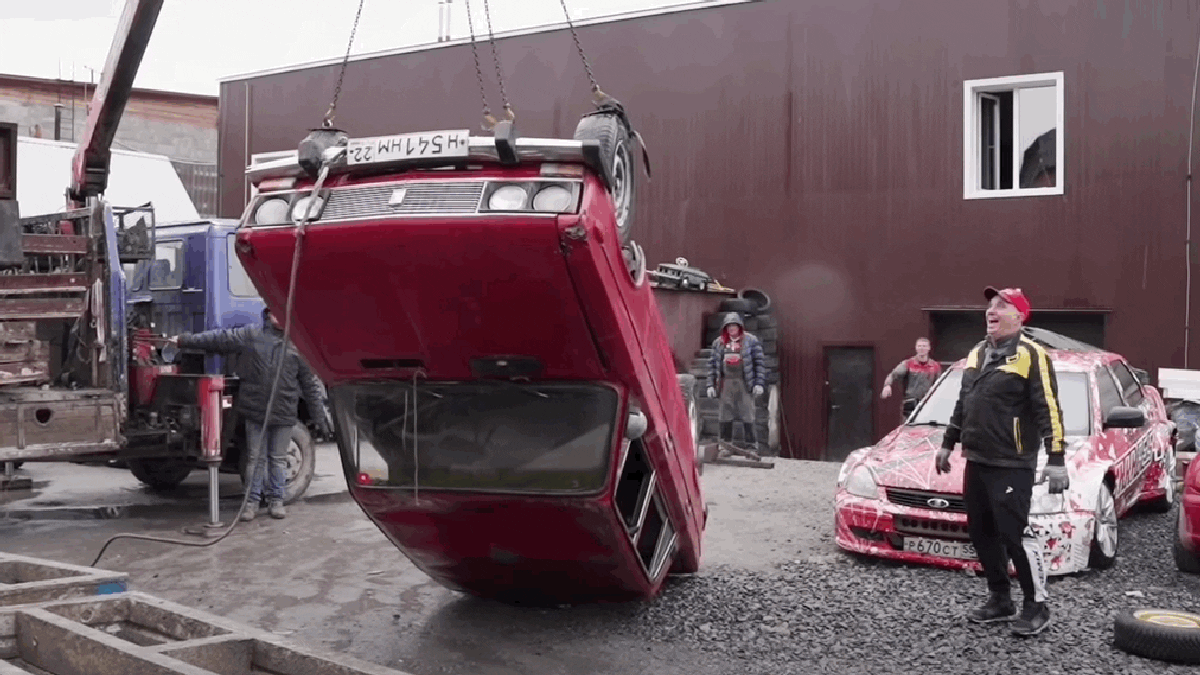Russian Super Glue Is Strong Enough to Lift a Lada

Oh those old Garage 54 boys are at it again. We haven’t checked in with them in a while, but they are still putting Ladas through hell with their automotive experiments. This video from earlier this month is particularly entertaining, proving that, yes, if you coat a car’s tire in super glue, you can suspend it upside-down.
This experiment uses the kind of Russian YouTube wrencher scientific method we all know and love — testing the strength of the chosen super glue by gluing two tires together and pulling on them super hard. Like, so hard guys. It didn’t budge, so our host tries a crowbar, also with no luck. He figures this is good enough proof that the glue will hold. But what held even better was a metal plate glued directly to the tire. The gang went with that approach.
With the strategy worked out, the guys glue metal plates to the tires of an unsuspecting Lada, and attempt to lift it in the air by the glued tire-plates using a crane. One tire was so old, the super glue tore the rubber away from the rest of the tire. Turns out, this glue is super strong: The ropes they used to lift the car broke before the glue did.
Our crew realized they were probably playing things too safe at this point, so they switched to chains, and lifted the car’s full weight using just two glued tires. Because of course they did.
So there you have it. You can, indeed lift a car in the air using only super glue, and a surprisingly small amount of the stuff. That’s not the only interesting use for the stuff. Super glue, known by its more official name Cyanoacrylate adhesive, was used to close wounds in Vietnam, according to the BBC’s Science Focus blog. Super glue fumes are also used to reveal fingerprints at crime scenes. But if you need to move a Lada, it’s a viable, if unconventional, option.



